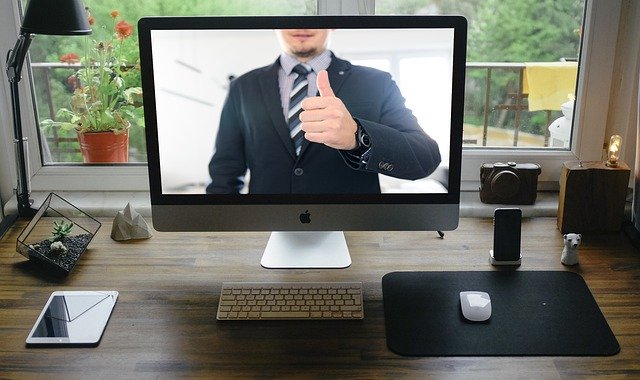As a huge portion of the population adjusts to working from home, many of us struggle to look professional in virtual meetings. Camera angle, lighting and objects in the background are all factors that can affect your digital image and frame of mind in the virtual workplace.
To help us put our best faces forward — via web camera — Andy DeLisle, a photographer and multimedia producer for the ASU Knowledge Enterprise, has laid out his best practices for looking good online. Watch the video below to see the following tips in action and the difference they can make.
1. Raise your camera to eye level. If you are using a laptop, a laptop stand, boxes or books can prop up your device. If using a desktop monitor or webcam, angle the camera to be more level to your face when looking straight ahead.
2. Avoid having lights in the background of your frame. Open doors, lamps and bright windows can make the camera think your surroundings are very bright — putting you in the shadows.
3. Add lights behind your camera to illuminate your face. If this creates hard shadows, try bouncing the light off of a smooth, white surface, such as a white wall or even a sheet of paper.
4. Use daylight bulbs and white LED lights in the space where you Zoom to show your appropriate skin tone.
5. Declutter the space that appears in your frame. Dirty dishes, dog toys or piles of laundry can be distracting and take away from your presence.
6. If you wear glasses, lower the brightness on your screen to reduce glare and reflection on your lenses.




